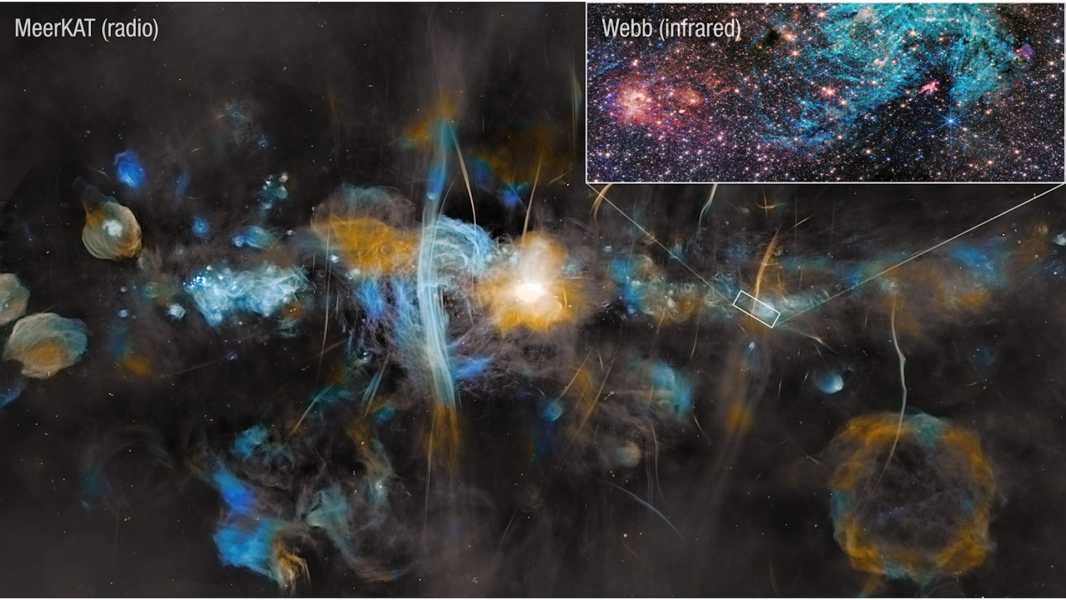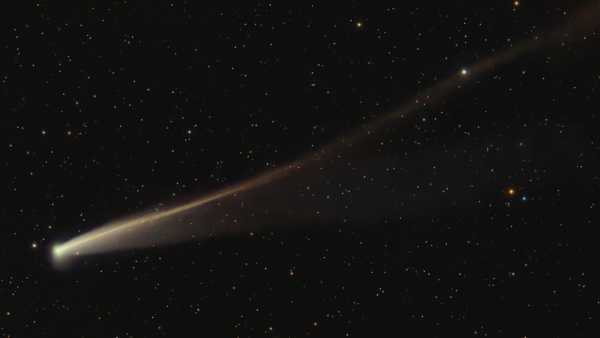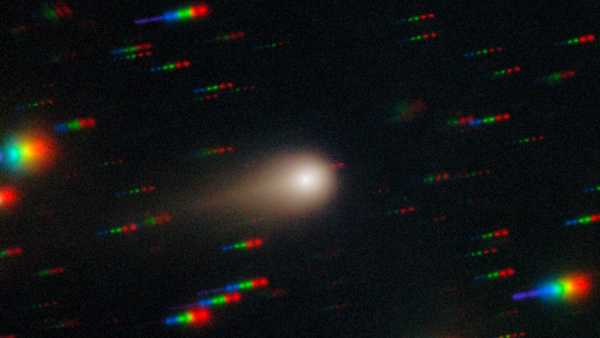
The Milky Way as captured by the MeerKAT radio telescope, with an added image from the James Webb Space Telescope. (Image credit: NASA, ESA, CSA, STScI, SARAO, Samuel Crow (UVA), John Bally (CU), Ruben Fedriani (IAA-CSIC), Iain Heywood (Oxford))
What is it: Sagittarius C region (Sgr C) in the Milky Way.
Location: 25,000 light years from our solar system in the constellation Sagittarius.
When it was published: April 2, 2025.
Why it's so special: The Milky Way usually appears as a reddish, pink, and bluish-white arc across the night sky, but this new long-exposure image from the MeerKAT ground-based radio telescope in South Africa shows our galaxy in a whole new light.
The main image, coloured blue, cyan, yellow and white, with many coloured bubbles representing supernova remnants, spans 1,000 light-years across the Milky Way.
The new radio image helps complement an infrared image of Sagittarius C (Sgr C) taken by the James Webb Space Telescope in 2023. The region is 44 light-years across and located approximately 200 light-years from the Milky Way's central supermassive black hole, Sagittarius A*, where star formation occurs.
The JWST image showed more than 500,000 stars, but stars are not forming as quickly in this extreme Central Molecular Zone as astronomers expected. One possible reason for this could be the powerful magnetic fields around the supermassive black hole, which form the filaments observed by both MeerKAT and JWST. These magnetic fields may be strong enough to counteract the gravity that compresses dense clouds of gas and dust, promoting star formation, which in turn suppresses star formation in Sgr C.
“The big question about our galaxy’s central molecular zone has been: If there’s so much dense gas and cosmic dust here, and we know stars form in these clouds, why are so few stars being born here?” said John Bally, an astrophysicist at the University of Colorado Boulder and co-principal investigator of a companion paper published April 2 in The Astrophysical Journal. “Now, for the first time, we’re directly seeing how strong magnetic fields can play a key role in suppressing star formation, even on small scales,” Bally added in a NASA statement.
MeerKAT is a radio telescope made up of 64 antennas located in the Karoo region of South Africa. It will eventually become part of a much larger radio telescope called the Square Kilometre Array, which will be the largest and most sensitive radio telescope in the world and will use more than 130,000 Christmas tree-shaped antennas on the traditional lands of the Wajarri Yamaji in Murchison, Western Australia.
For more breathtaking space images, check out our Space Photo of the Week archive.
TOPICS space photo of the week James Webb Space Telescope Milky Way
Sourse: www.livescience.com





